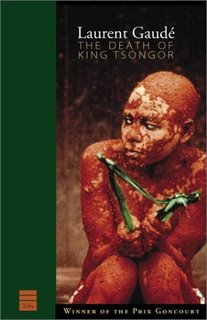 Personal Recollections of Joan of Arc by the Sieur Louis de Conte. Samuel Clemens.
Personal Recollections of Joan of Arc by the Sieur Louis de Conte. Samuel Clemens.Mark Twain wasn't the only pseudonym used by Samuel Clemens. When this book was first serialized in
Harper's Magazine in 1895, it was presented as "Freely Translated out of the Ancient French into Modern English from the Original Unpublished Manuscript in the National Archives of France" - a found manuscript with no connection to the famous author. The book presents itself as a memoir by a fictional companion of Joan's written for his family in the final years of life. The narrator claims to be a childhood friend of hers who, being one of the few people of her village that can write, accompanies her and becomes her secretary during her military career. After her capture and imprisonment, he sneaks into Rouen, where she is to be tried, and becomes an assistant to the official recorder of the the events. Thus, the author has established a single voice that can tell the complete history of the brief, miraculous life of the Maid of Orleans.
The events of the book have been simply summed up in a paragraph in WIKIPEDIA's entry on the
Hundred Years War as follows:
By 1428, the English were ready to pursue the war again,
laying siege to Orléans. Their force was insufficient to
fully invest the city, but larger French forces remained
passive. In 1429, Joan of Arc convinced the Dauphin to
send her to the siege, saying she had received visions
from God telling her to drive out the English. She raised
the morale of the local troops and they attacked the
English redoubts, forcing the English to lift the siege.
Inspired by Joan the French took several English strong
points on the Loire. Shortly afterwards a French army some
8000 strong broke through English archers at Patay with
heavy cavalry, defeating a 3000 strong army commanded by
Falstaff and John Talbot, 1st Earl of Shrewsbury. The first
major French land victory of the wars, this opened the way
for the Dauphin to march to Reims for his coronation as
Charles VII. After Joan was captured by the Burgundians in
1430 and later sold to the English and executed, the French
advance stalled in negotiations.
Clemens presents, through this memoir form, a story of a small group of Joan's friends from her village of Domremy who are caught up in her vision and quest and follow her into battle. They see how this poor, unschooled girl has the wisdom to convince the learned men of the Catholic Church and the French government of her mission, how she was able to raise an army and bring it success in battle despite the reservations of her generals, and how she was able to inspire the people of France to believe in their collective selves, the country of France, in spite of their foreign occupation and poor leadership. Through this approach, we the readers get a wonderful insight into the miraculous influence that Joan had on France at the time.
One might expect the irreverent Mark Twain, who wrote many scandalous pieces to be somewhat satirical in presenting this biography, but that is not the case. While his writing in this book is critical of church and state, his approach to the personal character of Joan puts her above reproach. He could find nothing in her life that was suspect, and he studied the records for 12 years. While he seems unsure about the nature of her voices, he shows Joan as firmly believing that they were real and of divine origin.
This is a mature Clemens who is married with a daughter Joan's age, and he seems happy to have found a human hero who didn't have ulterior motives when closely examined. He liked this best of all his work, yet the critics didn't share his feelings. The original Harper edition ran to almost 600 pages and was issued in two volumes. The story moves slowly with lots of asides about the infighting and rivalries of those around Joan. This may bother some readers since these are obviously fictional characters and not part of the historic record. Also, Clemens was not a scholar of the 15th century and his characters sometimes act more like 19th century Americans than French peasants. Yet these are minor flaws in a story that is an incredible introduction to the life and accomplishments of a truly remarkable person. I, personally, was disappointed that he didn't get closer to his subject Joan of Arc. He gives us the viewpoint of someone who was there and saw everything, but he never gets you inside the mind of Joan. Maybe that is the best we can hope for when reading about such an extraordinary person.











